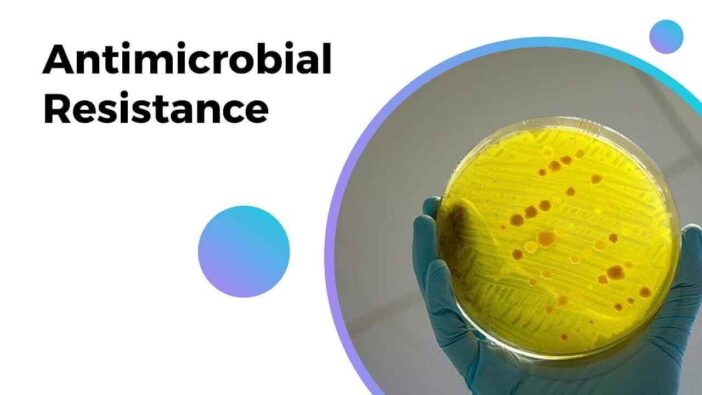
Antimicrobial resistance (AMR) is a condition in which bacteria, viruses, fungi, and parasites undergo changes, making them resistant to the drugs. If left unchecked, the risk of disease spreading and death becomes higher.
Antimicrobial resistance is not a condition that can be underestimated, because it is one of the global challenges in the field of health. The spread numbers, of course, need to be suppressed. This requires action and synergy from all sectors.
Antimicrobial Resistance Causes
The causes of antimicrobial resistance are in terms of health ranging from the absence of indications in antimicrobial use, inappropriate indications, improper antimicrobial selection, and improper doses.
AMR poses a significant global health threat to populations around the world. With the global trade and travel growth, resistant microorganisms can transmit so quickly that no country is safe.
The dangers of antimicrobial resistance are closely related to prevention and treatment behaviors, food production safety systems and the environment.
In today’s global health developments, the incidence of antimicrobial resistance is related to various sectors such as public health and animal health, food chain, agriculture, and environmental sector.
Antimicrobial Resistance Effects
Diseases caused by resistant pathogenic bacteria will trigger the use of antibiotics with higher doses or require new antibiotic alternatives that are more toxic so that it greatly affects the costs incurred and has an impact on the quality of human health. Diseases caused by resistant bacteria will become more difficult to treat and increase the death risk, especially in children, seniors and immunosuppression groups.
Some of the effects of AMR on human health include:
Increasing morbidity rates in humans
In 2014 as many as 700 000 deaths occurred due to cases of bacterial infections resistant to antibiotics (WHO 2017). Up to 50,000 lives are lost each year due to antibiotic-resistant bacterial infections in Europe and the United States (O’Neill 2017). The Centers for Disease Control and Prevention (CDC) states that the incidence of resistance of three major pathogenic bacterial strains in humans such as Salmonella, Campylobacter and E. coli is closely related to the use of antibiotics in feed.
These three microorganisms are three of the five leading causes of foodborne disease or cause about 90% of deaths from foodborne pathogen infections in the United States.
According to WHO, the number of bacteria Salmonella enteritidis and Campylobacter spp. Resistance to quoinolones from human and animal isolates is known to be on the rise. Some Salmonella Typhimurium has also been resistant to ampicillin, chloramphenicol, streptomycin, sulfonamides and tetracycline. The report mentions this is related to the trend of the use of sub therapical antimicrobials on farms.
Rising mortality rates in humans
Helms et al. (2002) found that patients infected with Salmonella Typhimurium resistant to ampicillin, chloramphenicol streptomycin, sulfonamides and tetracycline had a 4.8 times higher chance of death (95% confidence rate). Furthermore, they stated that quonolone resistance in these organisms can lead to mortality 10.3 times higher than the rest of the general population.
Lowering the efficacy of antibiotics in human medicine
Antimicrobial resistance due to the use of antibiotics in farm animals can lead to a decrease in the efficacy rate of most or all members of that class of antibiotics, while some of them may be particularly important for human treatment. This occurs due to the similarity of the structural components of such antibiotics, which cause cross-recognition and cross-resistance for all or most antibiotics of the same class.
Virginiamycin resistance is cross-reacted with streptogramin resistance used in humans and resistance to quinupristin-dalfopristin (Hayes et al. 2001). Avoparcin and vancomycin are glycopeptide-class antibiotics, both of which have similar structures, but differ in use and application.
Vancomycin is clinically important for humans and often serves as the last resort drug for gram-positive bacterial infections. Avoparcin is used in animals as a growth trigger in the European Union. Vancomycin resistance occurs as a result of the use of the sub therapical avoparcin in farm animals, leading to the ban on the use of avoparcin on farms in the EU.
Rising human health costs
With the increase in the incidence of AMR in recent years, there has been a much higher increase in health expenses. Rising health costs have a significant impact in poorer countries where resources are more limited and antibiotic efficacy declines to be important factors affecting human morbidity and mortality. Increased health care costs can be caused by treatment using additional antibiotics, longer hospitalizations, more complex diagnostic tests, higher professional service costs and other medical measures.
Antimicrobial Resistance dangers
Making Bacteria Resistant to Antibiotics
Antibiotics need to be used wisely, and adapted to the severity of the disease. If it’s used carelessly, antibiotics make bacteria change, so that it becomes resistant to treatment. In short, when antibiotics are consumed, most bacteria will die, but some of them can survive, even multiply.
In conclusion, antibiotics should not be used excessively, because it can increase the number of resistant bacteria. Until now, AMR has become a serious global health problem. The spread of bacteria that carries this resistant nature can occur through infection, food, and the environment. Although this condition is detrimental to certain health patients, ICU patients become the most disadvantaged.
Bacterial Resistance Appears Faster
The next danger is that bacterial resistance appears faster than the discovery of new microbial agents. This is certainly a global safety issue, because it can have serious impacts on the health of animals, humans, and the environment where they live.
Source:
- Image: DFID – UK Department for International Development, CC BY 2.0 https://creativecommons.org/licenses/by/2.0, via Wikimedia Commons
- Video: World Health Organization (WHO)


